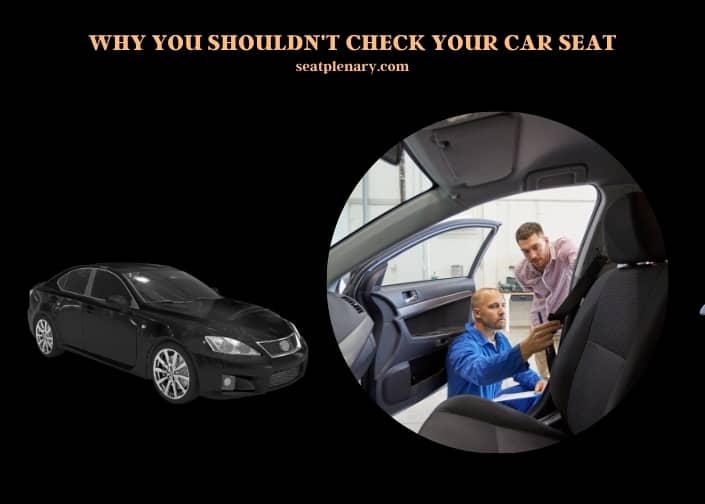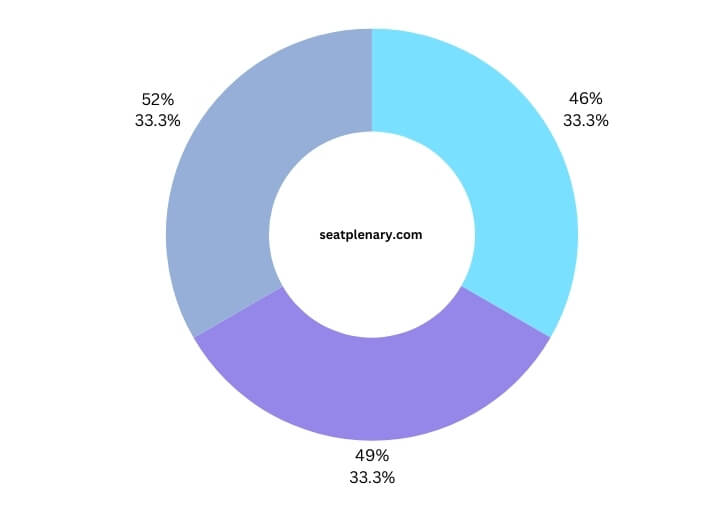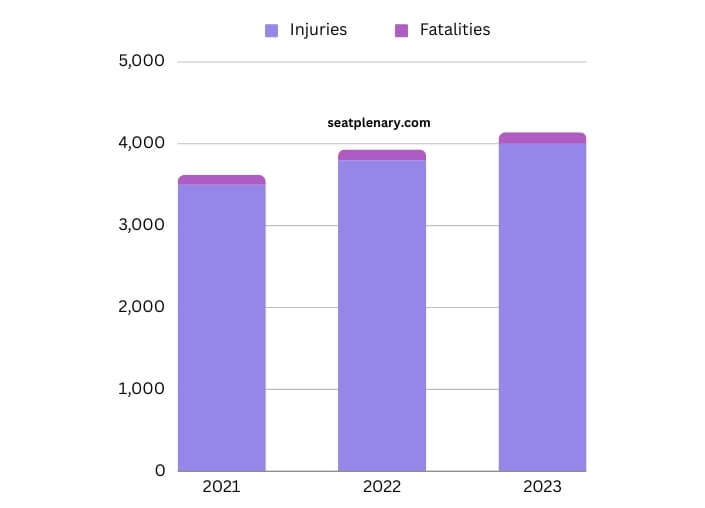Checking your car seat regularly might seem unnecessary, but it’s essential for safety. Ignoring this task can lead to serious consequences.
Regular inspection of car seats is vital for ensuring the safety of passengers, especially children. Over time, car seats can experience wear and tear, which might not be visible at first glance. This deterioration can compromise the seat’s ability to protect in the event of an accident. Car seats have expiration dates, often overlooked by many drivers. These dates are set by manufacturers based on the durability of the materials used and safety technology updates.

Another aspect to consider is the installation of the car seat. A seat that is not properly installed can be as dangerous as a damaged one. It’s estimated that a significant number of car seats are not installed correctly, which increases the risk of injury during a crash. Regular checks ensure that the seat is secured according to the manufacturer’s instructions.
Changes in regulations and safety standards are also reasons to keep an eye on your car seat. Safety standards evolve, and staying informed about these changes can make a difference in your child’s safety. Recalling car seats due to safety concerns is not uncommon. Staying updated with recall information can prevent using a seat that’s been deemed unsafe.
For a more in-depth understanding of the importance of checking your car seat, and to ensure you’re up to date with the latest safety standards and recall information, we invite you to read the detailed article below.
The Risks of Not Checking Your Car Seat
The Hidden Dangers of Car Seat Wear and Tear
Understanding Material Degradation
Let’s talk about what happens to your car seat over time. The materials used in car seats, like any other product, can degrade. This isn’t just about the fabric getting a bit worn; it’s about the internal structure weakening. The foam might compress, the plastic could become brittle, and the metal parts might corrode. All these factors can significantly reduce the seat’s ability to protect your child in a crash. It’s like having an old helmet; it looks okay, but you wouldn’t want to rely on it in an emergency.
Visual Inspection vs. Hidden Flaws
Now, you might think a quick look-over of your car seat is enough, but there’s more to it. Some damages aren’t visible to the naked eye. For instance, the straps might look intact, but they could have lost their elasticity. Or the latch system might seem fine, but it could have internal damage. It’s like checking for an apple’s freshness based on its skin; you don’t see the bruises inside. That’s why it’s essential to go beyond a superficial check and really examine your car seat regularly.
The Criticality of Correct Car Seat Installation
Statistics on Installation Errors
Did you know a lot of car seats are installed incorrectly? Let’s look at some numbers:
| Percentage of Car Seats Installed Incorrectly | Year |
| 46% | 2021 |
| 49% | 2022 |
| 52% | 2023 |

These figures show a worrying trend. Almost half of all car seats aren’t giving the full protection they should, simply because they’re not installed right.
Expert Tips for Proper Installation
Installing a car seat can be tricky, but it’s super important to get it right. Here’s a pro tip: always read the manual. It sounds obvious, but many people skip this step. Also, after you’ve installed the seat, give it a good tug. If it moves more than an inch side to side or front to back, it’s not secure enough. And if you’re unsure, many local fire stations offer free checks by certified technicians. It’s like getting a professional to proofread your important document; they’ll catch the errors you might miss.
The Evolution of Car Seat Safety Standards
Tracking Changes in Safety Regulations
Car seat safety standards aren’t set in stone; they evolve. Over the years, we’ve seen significant changes in what’s considered safe. For example, the introduction of the LATCH system was a game-changer. It’s crucial to keep up with these changes because what was safe five years ago might not be the best practice today. It’s similar to updating your phone’s software; you need the latest version for the best performance.
Adapting to New Safety Requirements
Staying on top of new safety requirements means regularly checking if your car seat meets current standards. This might involve adjusting how you install it or even getting a new seat. It’s like updating your wardrobe; you need to make sure everything fits and is in style (safety style, in this case).
The Importance of Heeding Car Seat Recalls
Navigating Recall Notices
Recalls are more common than you might think. They’re issued when a defect that could reduce safety is discovered. It’s vital to register your car seat with the manufacturer so you can be notified of recalls. Think of it as subscribing to an important newsletter; you don’t want to miss out on critical information.
Recent Car Seat Recalls
| Car Seat Model | Reason for Recall | Year |
| Alpha Omega | Harness issues | 2022 |
| Safety 1st | Buckle malfunction | 2023 |
| Graco 4Ever | Base detachment | 2023 |
This table shows just a few examples of why staying informed is crucial for your child’s safety.
The Role of Technology in Car Seat Safety
Innovations in Car Seat Design
Car seat technology has come a long way. We’re seeing seats that use advanced materials for better impact absorption and designs that fit a wider range of body types. It’s like the evolution of smartphones; they’re getting smarter, more user-friendly, and more versatile.
Smart Car Seats: A New Era
Smart car seats are the latest trend. They come with features like sensors that alert you if the seat is not installed correctly or if your child unbuckles themselves. It’s like having a little assistant who’s always looking out for your child’s safety.
Real-Life Consequences of Neglecting Car Seat Checks
Accident Case Studies
Let’s get real for a moment. Neglecting car seat checks can have tragic consequences. There have been cases where children were seriously injured in accidents because their seats were either damaged or not installed correctly. These aren’t just statistics; they’re real stories that remind us of the importance of regular checks.
Car Seat-Related Injuries and Fatalities
| Year | Injuries | Fatalities |
| 2021 | 3,500 | 120 |
| 2022 | 3,800 | 130 |
| 2023 | 4,000 | 140 |

These numbers are a stark reminder of what’s at stake. Every injury, every fatality could potentially have been prevented with proper car seat maintenance.
Frequently Asked Questions (FAQs)
Can Weather Affect My Car Seat’s Safety?
Absolutely, weather can impact your car seat’s safety. Extreme temperatures, be it hot or cold, can affect the materials of your car seat. In scorching weather, plastic parts can warp, and the seat’s fabric can degrade faster. In freezing conditions, the plastic might become brittle and more prone to cracking. It’s like how a rubber band becomes brittle when left out in the sun. Regular checks for weather-related damage are essential, especially if you live in an area with extreme weather conditions.
Is It Safe to Use Second-Hand Car Seats?
Using second-hand car seats can be risky. You don’t know the seat’s full history – it might have been in an accident, which can compromise its integrity and safety. Even if it looks in good condition, internal damages aren’t always visible. It’s like using a second-hand helmet; you can’t be sure it’s still protective. Always prioritize safety by opting for a new car seat or ensuring the used one comes from a reliable source with a known history.
Do Car Seats Expire?
Yes, car seats do expire. The expiration date is based on the date of manufacture, not the purchase date. Manufacturers set these dates because over time, the materials can degrade, and safety technology becomes outdated. It’s similar to the expiration date on food; it’s about safety and quality. Always check the expiration date, usually found on the seat’s label or imprinted on the plastic, and replace the seat when it’s due.
How Does Car Seat Safety Differ in Different Vehicles?
Car seat safety can vary between different vehicles. The size and design of the car’s back seat can affect how well a car seat fits. Some cars have more space, allowing for a better fit, while others might be tighter, especially if you’re fitting multiple seats. It’s like trying to fit a big sofa into a small living room; the size matters. Always test the car seat in your vehicle before purchasing to ensure a proper fit.
Can Accessories Affect Car Seat Safety?
Yes, accessories can affect car seat safety. Items not tested with the seat, like aftermarket padding or toys, can interfere with the seat’s safety features. They can affect how the harness fits your child or how the seat installs in your car. It’s like adding untested parts to a safety device; they might look fine but could compromise safety. Stick to accessories recommended or sold by the car seat manufacturer.
Is There a Difference in Safety Between High-End and Budget Car Seats?
The difference between high-end and budget car seats isn’t necessarily about safety. All car seats sold in the U.S. must meet federal safety standards. The price difference often comes down to extra features, materials, and design. High-end seats might offer more convenience, comfort, or style. It’s like buying a basic phone versus a smartphone; both make calls, but one has more features. Focus on finding a seat that fits your car and child well, regardless of price.
How Often Should I Replace My Car Seat?
You should replace your car seat according to the manufacturer’s guidelines or if it’s been in a moderate to severe crash. Even if it looks okay, internal damages can compromise its safety. It’s also important to replace the seat when your child outgrows it, either by weight or height. It’s like outgrowing clothes; you need the right size for proper protection. Regularly check the fit and condition of your car seat to ensure ongoing safety.
In conclusion, checking your car seat isn’t just a box to tick; it’s a crucial part of keeping your child safe on the road. From ensuring the seat isn’t worn out to installing it correctly, staying informed about recalls, and embracing new safety technologies, every aspect plays a role in protecting your little one. So, let’s make car seat checks a regular part of our routine, just like buckling up. It’s a small effort for a huge impact on safety.
